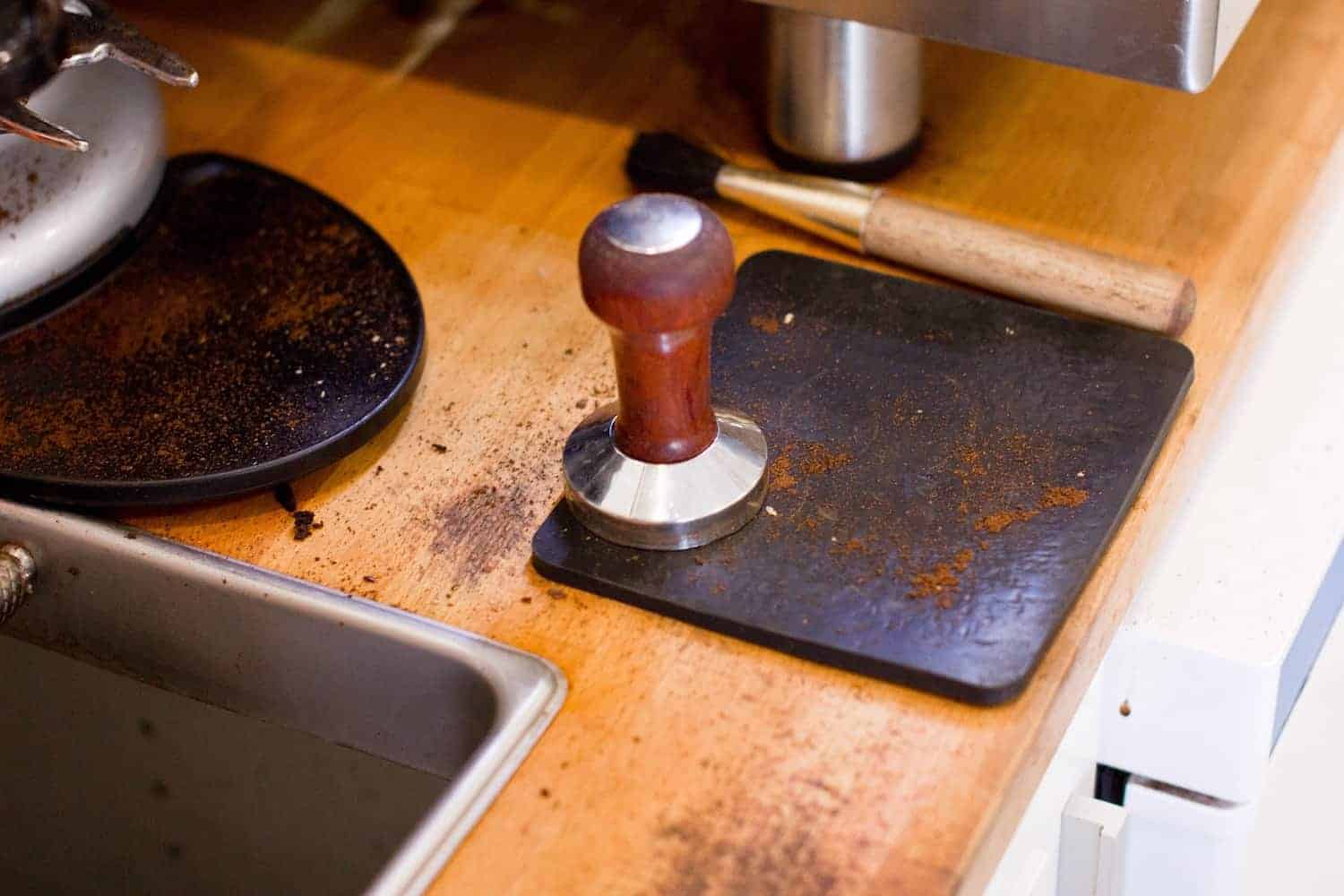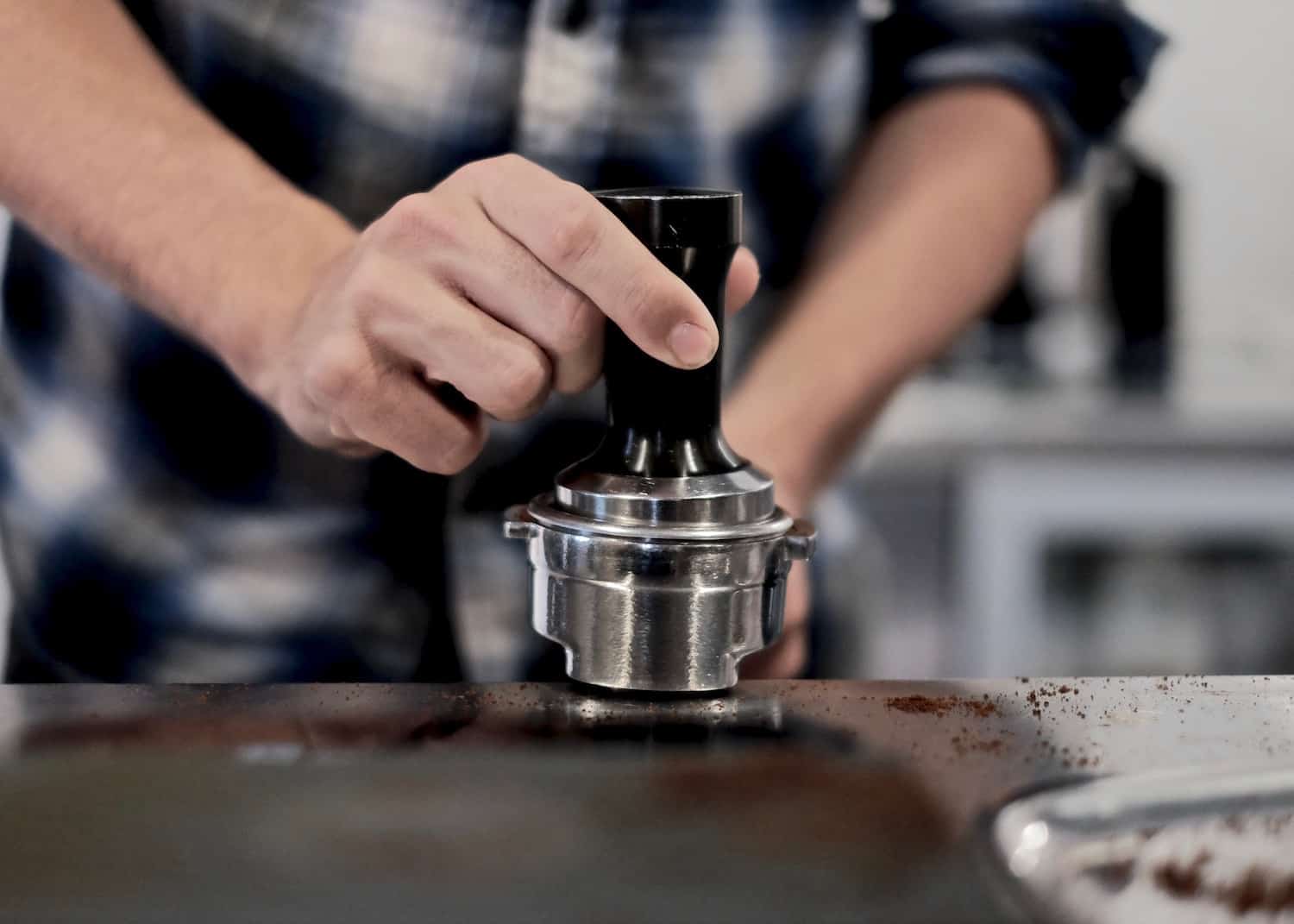What is Espresso Tamping and Why is Necessary?
Many coffee lovers adore a good espresso, but the thing that stops them from making it at home is the seemingly too-technical process.
It’s true that making espresso requires certain steps to get it right and keep the coffee from spewing all over your kitchen, but the one element that will ensure your success isn’t all that difficult to get the hang of: tamping.
If you’ve ever watched a barista make an espresso, you’ve probably noticed them pushing the coffee down with a little tool that looks something like a stamper.
That is called the tamper, and it’s necessary to compact the espresso just right and get the extraction of the coffee’s flavors on target. Here’s more about tamping and how to do it at home.
What is Espresso Tamping?
Espresso machines rely on pressure to extract the flavor from coffee grounds, and both the pressurized water that comes from your machine and the resistance from the packed coffee grounds come into play.
To pack the grounds into any espresso machine just right, you’ll need to use a tamper.
The tamper takes loose grounds and forms them into a compressed puck for the water to come into contact with once the brewing process starts.
There’s really no such thing as one model of tamper being better than another, so use whatever came with your espresso maker — tamping is more about the technique rather than the tool.
Why Tamping Is Necessary
There needs to be a small amount of space between the espresso maker’s filter and where the water comes out of the machine, which is part of why tamping is necessary. If you don’t tamp your coffee grounds, there won’t be enough space for the water to optimally saturate the coffee.
The most important reason to tamp is to help the water along when it comes to extracting flavor from the coffee.
With tamped grounds that are tightly compressed, the water will shoot through and take with it delicious oils from the coffee.
With loose grounds, you’ll have weakly flavored espresso that could hardly be called espresso at all.
If you ever make your own brew at home and find that it lacks the characteristic bold flavor and richness of a properly made espresso, improper tamping may be the culprit.
How to Tamp
Before you start tamping, realize that it’s best to keep your wrist straight with your elbow bent as close to a 90 degree angle as possible.
This will help the force come from your shoulders rather than the joints in your wrist.
Carefully measure the right amount of grounds according to your machine’s instructions, and don’t try to put in extra lest you end up with grounds spewed out as the espresso shot is being pulled.
After you’ve put fine coffee grounds into the espresso machine’s coffee container, also known as a coffee bed, rest the tamper on top and ensure it’s level.
Don’t start pushing down unless the tamper is sitting level in the coffee container, otherwise you’ll risk uneven extraction and espresso without as rich a flavor.
Push down using firm and consistent pressure — think of even pushing rather than how hard you push down. Once the tamping is done, the coffee grounds should look like they’ve been compressed into an even mass.
Finish brewing according to your machine’s manual, and in minutes you’ll have an amazing cup of espresso.


